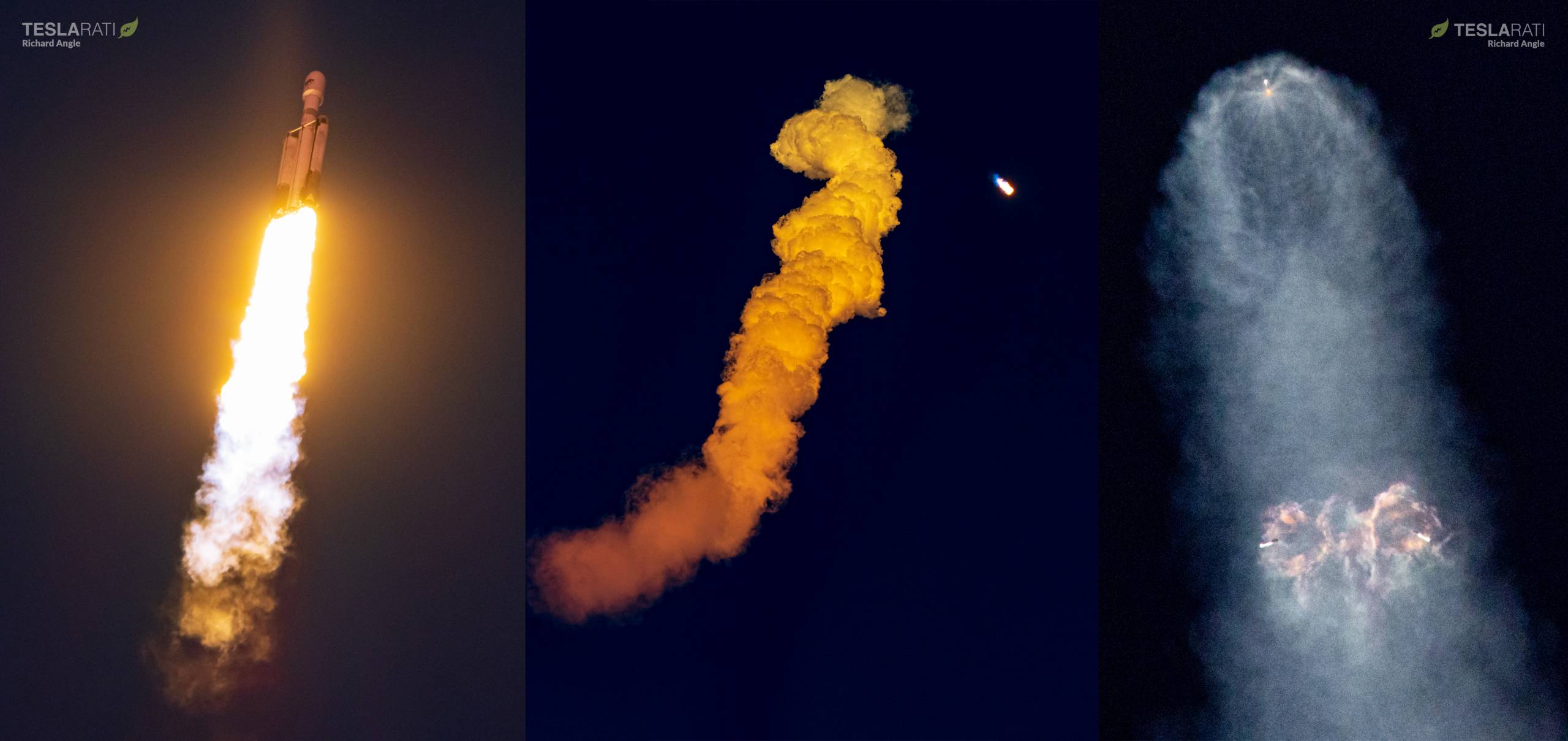
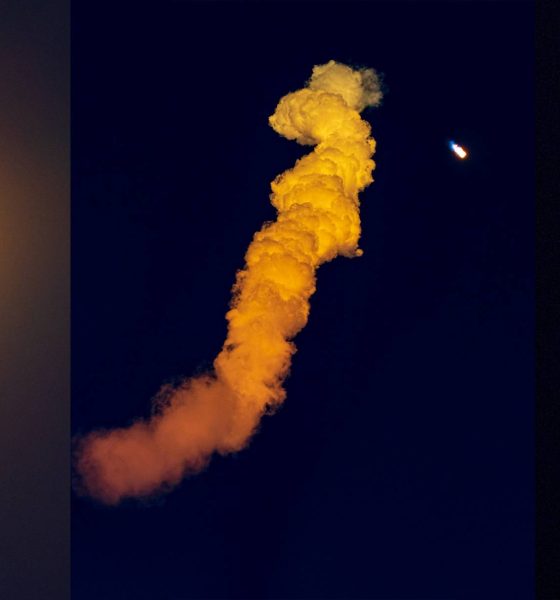
News
SpaceX Falcon Heavy rocket kicks off fifth mission with most spectacular launch yet
SpaceX’s fifth Falcon Heavy lifted off shortly after sunset on the US Space Force’s USSF-67 mission, producing one of the massive commercial rocket’s most spectacular launches yet.
Powered by three Falcon 9-derived boosters, each with nine Merlin 1D engines, Falcon Heavy fired up and soared off of SpaceX’s Kennedy Space Center LC-39A pad at the start of its Sunday launch window. Producing up to 2326 tons (5.13 million lbf) of thrust shortly after liftoff, Falcon Heavy upheld its position as the world’s most powerful commercial rocket and the second most powerful operational rocket.
USSF-67 largely mirrored SpaceX’s November 1st, 2022 USSF-44 Falcon Heavy launch, and even used the same side boosters. Flying for the second time in 75 days, B1064 and B1065 aced their roles in the mission and separated from Falcon Heavy’s expendable center booster (or core) around three minutes after liftoff. The side boosters immediately flipped around with thrusters powered by compressed nitrogen gas and ignited three of their nine Merlin 1D engines to boost back to the Florida coast. After coasting back to Florida, they completed brief reentry burns to lessen atmospheric heating and fired up one last time to gently touch down at SpaceX’s LZ-1 and LZ-2 landing pads.
The update that's rolling out to the fleet makes full use of the front and rear steering travel to minimize turning circle. In this case a reduction of 1.6 feet just over the air— Wes (@wmorrill3) April 16, 2024
Another mysterious military mission
Because Falcon Heavy lifted off after sunset, local skies were dark and the rocket quickly climbed back into daylight, creating spectacular contrast between twilight and the bright rocket exhaust. When Falcon Heavy’s side boosters flipped around and reignited, their high-velocity exhaust plumes slammed into the center core’s opposing plume, producing spectacular interactions and a nebula-like cloud that caught even more of the daylight. Had Falcon Heavy lifted off just a handful of minutes later, a darker sky could have made for an even more incredible ‘nebula’ or ‘jellyfish’, but the rocket’s first twilight launch was still spectacular.
After both side boosters touched down, SpaceX ended its live coverage at the request of the Space Force, reiterating the mission’s secretive customer and nature. Compared to USSF-44, the USSF hasn’t confirmed much about the USSF-67 mission’s payloads, but Falcon Heavy is known to be carrying a geostationary communications relay satellite called CBAS-2 and likely built by Boeing.
CBAS-2 is joined by Northrop Grumman’s third Long Duration Propulsive EELV or LDPE-3A, a combination of a propulsive kick stage and a satellite. LDPE-3A is carrying a collection of rideshare satellites and payloads and is designed to operate for months in orbit. Using USSF-44 as a guide, the total USSF-67 payload could weigh roughly 3.75 to 4.75 tons (8,250-10,500 lb).

Climbing to GSO
While small compared to ordinary payloads, Falcon Heavy is launching USSF-67 directly to a geosynchronous orbit. Direct-to-GEO/GSO launches are exceptionally challenging for the rocket. Falcon Heavy must first sacrifice one of its three boosters just to ensure the Falcon upper stage is traveling fast enough and has enough propellant to spare when it separates. The upper stage must then conduct at least three or four burns.
The first burn likely carried the upper stage and USSF-67 payload into a parking orbit around 300 kilometers (~185 mi) above Earth’s surface. A second burn of the upper stage’s Merlin Vacuum engine will lift the pair into a geosynchronous transfer orbit (GTO) with the low end still around 300 kilometers but the high end around 35,800 kilometers (~22,250 mi). Finally, the upper stage must survive a roughly five-hour coast to that apogee. During that coast, the rocket must survive passes through both of Earth’s harsh radiation belts and maintain perfect control of its orientation and tank pressures to keep its refined kerosene fuel from freezing, its cryogenic liquid oxygen (LOx) from boiling away, and itself from bursting as its propellant warms and expands.
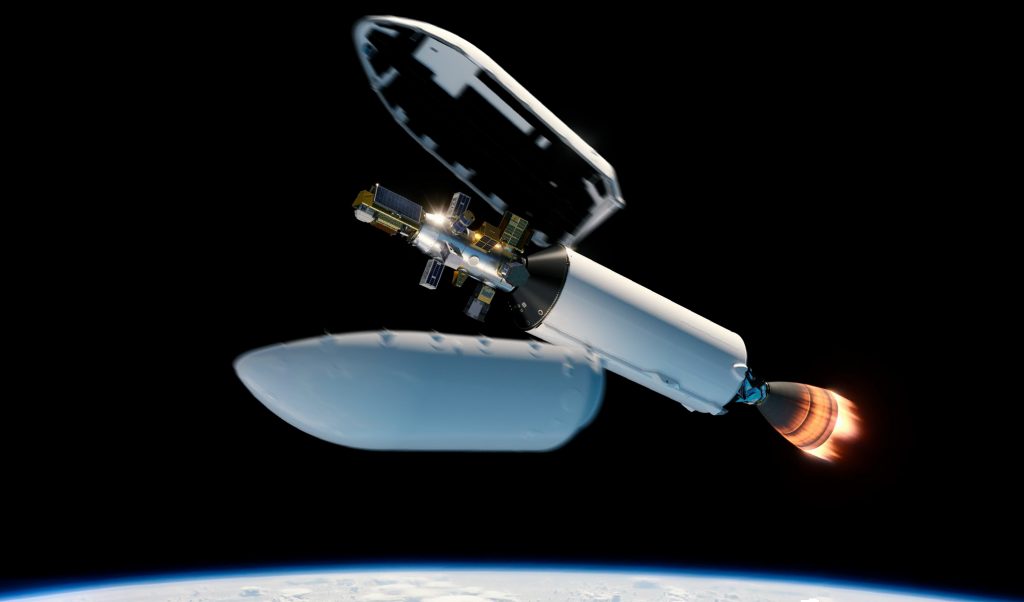
If it does all of those things right, the upper stage will be able to complete a circularization burn at apogee and deploy its CBAS-2 and LPDE-3A payloads directly into geosynchronous orbit (~35,786 x ~35,786 km). At GSO, satellites orbit at the same speed as Earth spins, allowing them to indefinitely hover over the same region of the planet, making it useful for Earth observation, surveillance, and communications. Finally, the Falcon upper stage will attempt to complete one last burn to send itself into a graveyard orbit just above GSO, where it will eventually run out of power and lose control.
It will take around 6-8 hours after liftoff before SpaceX or the USSF can confirm if the mission was a success. Rewatch SpaceX’s fifth Falcon Heavy launch and dual booster landing here.
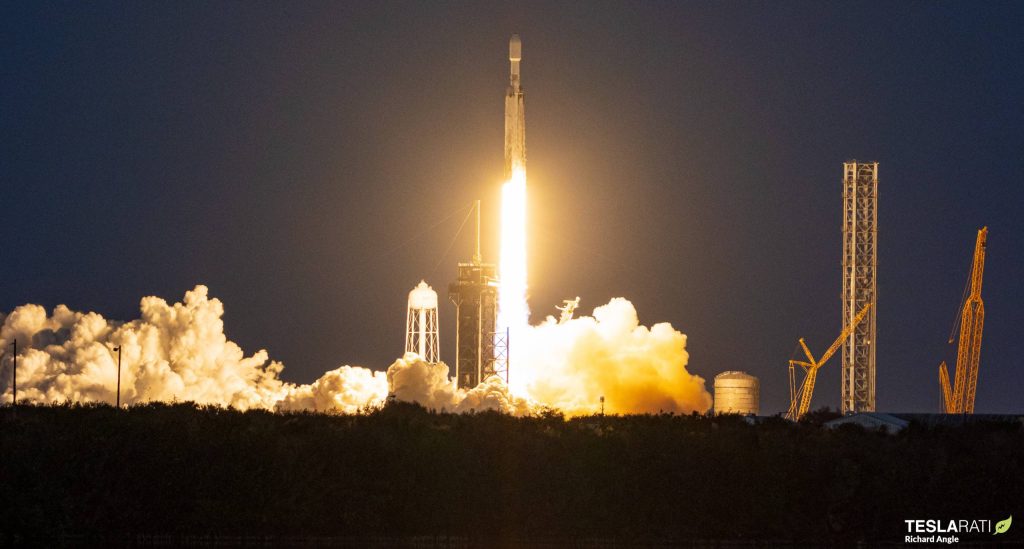

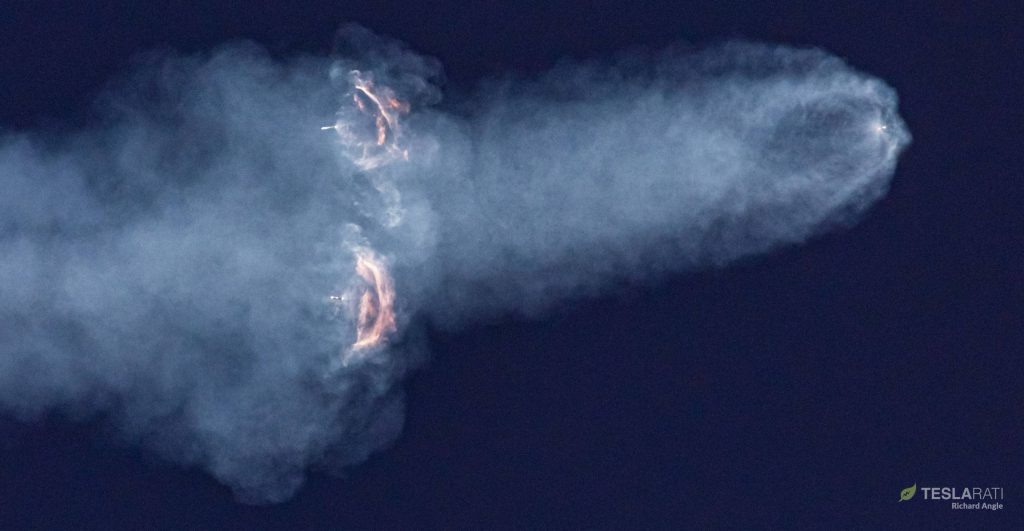
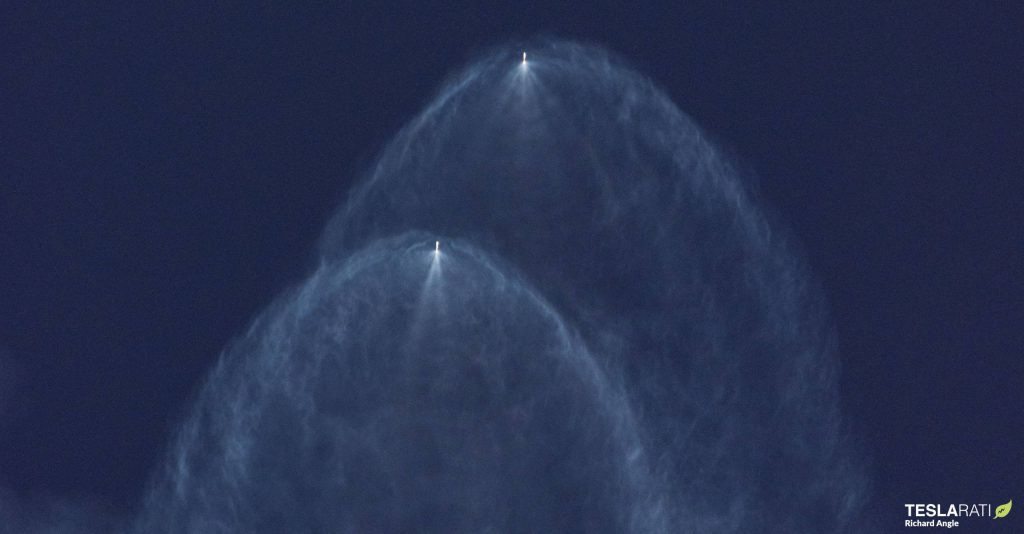
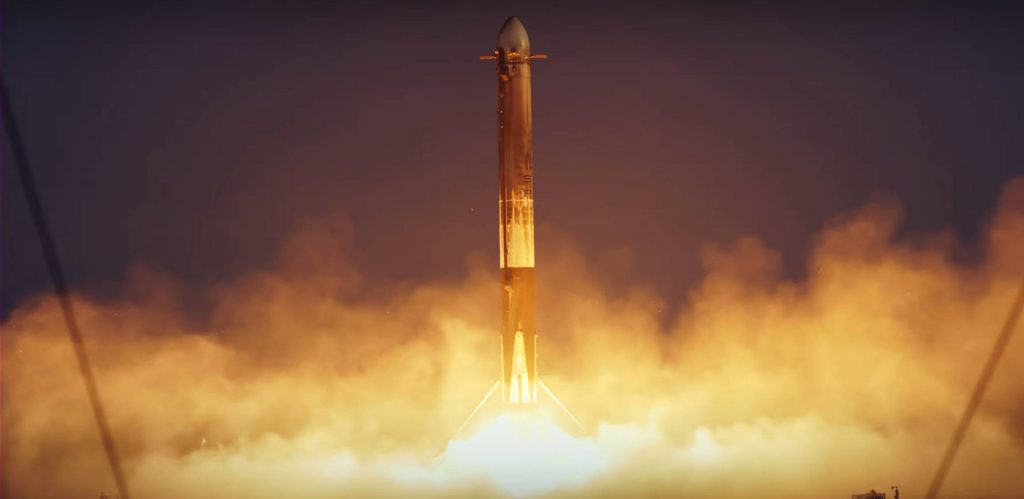
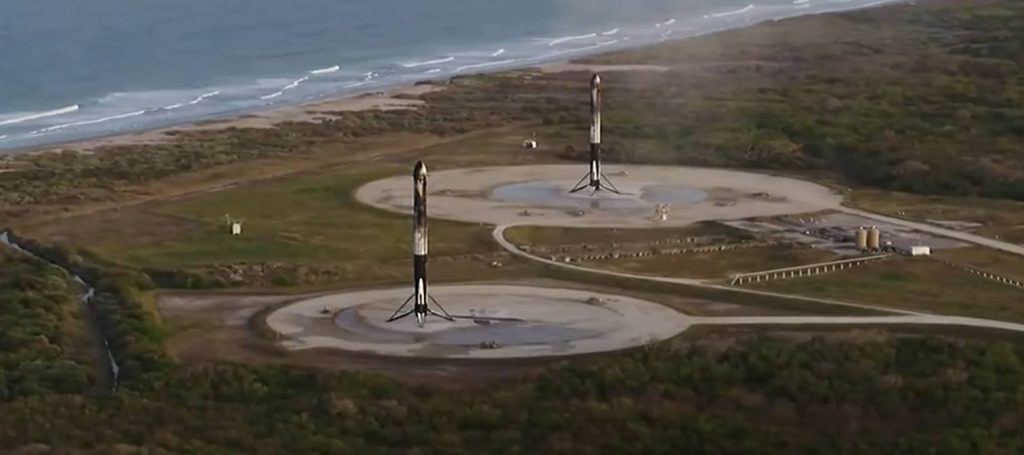

News
Tesla adds 15th automaker to Supercharger access in 2025
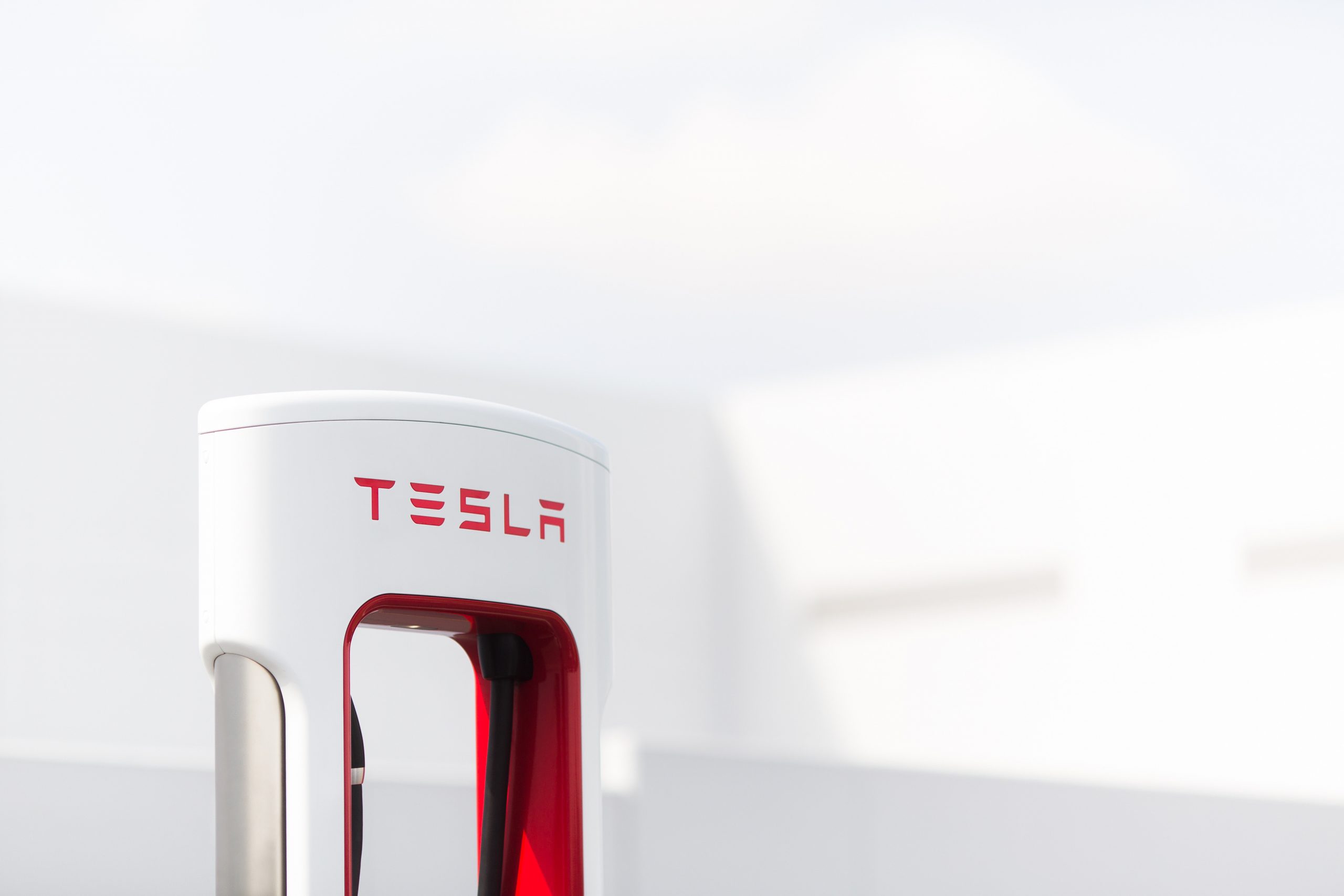
Tesla has added the 15th automaker to the growing list of companies whose EVs can utilize the Supercharger Network this year, as BMW is the latest company to gain access to the largest charging infrastructure in the world.
BMW became the 15th company in 2025 to gain Tesla Supercharger access, after the company confirmed to its EV owners that they could use any of the more than 25,000 Supercharging stalls in North America.
Welcome @BMW owners.
Download the Tesla app to charge → https://t.co/vnu0NHA7Ab
— Tesla Charging (@TeslaCharging) December 10, 2025
Newer BMW all-electric cars, like the i4, i5, i7, and iX, are able to utilize Tesla’s V3 and V4 Superchargers. These are the exact model years, via the BMW Blog:
- i4: 2022-2026 model years
- i5: 2024-2025 model years
- 2026 i5 (eDrive40 and xDrive40) after software update in Spring 2026
- i7: 2023-2026 model years
- iX: 2022-2025 model years
- 2026 iX (all versions) after software update in Spring 2026
With the expansion of the companies that gained access in 2025 to the Tesla Supercharger Network, a vast majority of non-Tesla EVs are able to use the charging stalls to gain range in their cars.
So far in 2025, Tesla has enabled Supercharger access to:
- Audi
- BMW
- Genesis
- Honda
- Hyundai
- Jaguar Land Rover
- Kia
- Lucid
- Mercedes-Benz
- Nissan
- Polestar
- Subaru
- Toyota
- Volkswagen
- Volvo
Drivers with BMW EVs who wish to charge at Tesla Superchargers must use an NACS-to-CCS1 adapter. In Q2 2026, BMW plans to release its official adapter, but there are third-party options available in the meantime.
They will also have to use the Tesla App to enable Supercharging access to determine rates and availability. It is a relatively seamless process.
News
Tesla adds new feature that will be great for crowded parking situations
This is the most recent iteration of the app and was priming owners for the slowly-released Holiday Update.

Tesla has added a new feature that will be great for crowded parking lots, congested parking garages, or other confusing times when you cannot seem to pinpoint where your car went.
Tesla has added a new Vehicle Locator feature to the Tesla App with App Update v4.51.5.
This is the most recent iteration of the app and was priming owners for the slowly-released Holiday Update.
While there are several new features, which we will reveal later in this article, perhaps one of the coolest is that of the Vehicle Locator, which will now point you in the direction of your car using a directional arrow on the home screen. This is similar to what Apple uses to find devices:
Interesting. The location arrow in the Tesla app now points to your car when you’re nearby. pic.twitter.com/b0yjmwwzxN
— Whole Mars Catalog (@wholemars) December 7, 2025
In real time, the arrow gives an accurate depiction of which direction you should walk in to find your car. This seems extremely helpful in large parking lots or unfamiliar shopping centers.
Getting to your car after a sporting event is an event all in itself; this feature will undoubtedly help with it:
The nice little touch that Tesla have put in the app – continuous tracking of your vehicle location relative to you.
There’s people reporting dizziness testing this.
To those I say… try spinning your phone instead. 😉 pic.twitter.com/BAYmJ3mzzD
— Some UK Tesla Guy (UnSupervised…) (@SomeUKTeslaGuy) December 8, 2025
Tesla’s previous app versions revealed the address at which you could locate your car, which was great if you parked on the street in a city setting. It was also possible to use the map within the app to locate your car.
However, this new feature gives a more definitive location for your car and helps with the navigation to it, instead of potentially walking randomly.
It also reveals the distance you are from your car, which is a big plus.
Along with this new addition, Tesla added Photobooth features, Dog Mode Live Activity, Custom Wraps and Tints for Colorizer, and Dashcam Clip details.
🚨 Tesla App v4.51.5 looks to be preparing for the Holiday Update pic.twitter.com/ztts8poV82
— TESLARATI (@Teslarati) December 8, 2025
All in all, this App update was pretty robust.
Elon Musk
Tesla CEO Elon Musk shades Waymo: ‘Never really had a chance’

Tesla CEO Elon Musk shaded Waymo in a post on X on Wednesday, stating the company “never really had a chance” and that it “will be obvious in hindsight.”
Tesla and Waymo are the two primary contributors to the self-driving efforts in the United States, with both operating driverless ride-hailing services in the country. Tesla does have a Safety Monitor present in its vehicles in Austin, Texas, and someone in the driver’s seat in its Bay Area operation.
Musk says the Austin operation will be completely void of any Safety Monitors by the end of the year.
🚨 Tesla vs. Waymo Geofence in Austin https://t.co/A6ffPtp5xv pic.twitter.com/mrnL0YNSn4
— TESLARATI (@Teslarati) December 10, 2025
With the two companies being the main members of the driverless movement in the U.S., there is certainly a rivalry. The two have sparred back and forth with their geofences, or service areas, in both Austin and the Bay Area.
While that is a metric for comparison now, ultimately, it will not matter in the coming years, as the two companies will likely operate in a similar fashion.
Waymo has geared its business toward larger cities, and Tesla has said that its self-driving efforts will expand to every single one of its vehicles in any location globally. This is where the true difference between the two lies, along with the fact that Tesla uses its own vehicles, while Waymo has several models in its lineup from different manufacturers.
The two also have different ideas on how to solve self-driving, as Tesla uses a vision-only approach. Waymo relies on several things, including LiDAR, which Musk once called “a fool’s errand.”
This is where Tesla sets itself apart from the competition, and Musk highlighted the company’s position against Waymo.
Jeff Dean, the Chief Scientist for Google DeepMind, said on X:
“I don’t think Tesla has anywhere near the volume of rider-only autonomous miles that Waymo has (96M for Waymo, as of today). The safety data is quite compelling for Waymo, as well.”
Musk replied:
“Waymo never really had a chance against Tesla. This will be obvious in hindsight.”
Waymo never really had a chance against Tesla. This will be obvious in hindsight.
— Elon Musk (@elonmusk) December 10, 2025
Tesla stands to have a much larger fleet of vehicles in the coming years if it chooses to activate Robotaxi services with all passenger vehicles. A simple Over-the-Air update will activate this capability, while Waymo would likely be confined to the vehicles it commissions as Robotaxis.








